The return of cold weather this week brings the end of a long, warm summer and autumn that seemed as if they would not end. Global temperatures are soaring toward a record high this year, according to the World Meteorological Organization (WMO), the United Nations’ weather agency, of about 1.2 degrees Celsius above pre-industrial levels (before 1850). The WMO has said that 16 of the 17 hottest years have occurred since 2000 with the only exception being 1998. Much of the blame for many of these warm years has gone to the El Niño climate cycle of warmer Pacific Ocean waters that results in a global impact on weather patterns. Scientists are seeing a shift to a moderate La-Niña climate cycle this winter which normally allows cold air masses to build and remain over eastern North America. What complicates things is that our Atlantic Multi-Decadal Oscillation (AMO) climate cycle is in a continued warm phase, the North Atlantic Oscillation (NAO) climate cycle is in a cold phase and the Pacific Decadal Oscillation is in the early stages of its warm cycle. These oscillations are linked ocean-atmosphere patterns that influence the weather over periods of weeks to years. I have heard gossip around town about a horribly severe winter ahead, so I thought I’d examine what some of the experts are saying. Continue reading
P.E.I.’s Top 3 Weather Stories of 2015
By Dr. Adam Fenech
Another year has gone by and it’s time to talk about Prince Edward Island’s top three weather stories of 2015. This past year continues to remind us of the important part weather plays in our everyday lives. Every year brings stories of weather no matter where you are, and Prince Edward Island is no different. And while I am tempted to speak about the rare record-breaking warm weather at the end of May in Summerside of 23.7 degrees Celsius (°C), and in mid-August of record-breaking warm temperatures above 30°C across the Island, it is more appropriate to focus on the cold winter weather of 2015. Here are my top three weather stories for 2015, and how they affected Prince Edward Island.
Number 3 – Cold Winter Tempratures of 2015
The winter temperatures of 2015 were well below the normal – the “normal” being the average of 30 years from 1981-2010. After a balmy December in 2014 of 2.5°C above normal, Prince Edward Island experienced five straight months of daily average temperatures below normal to start the year of 2015 –January was 1°C colder; February was 5.3°C colder; March was 2.9°C colder and April was 3°C colder. Prince Edward Island also suffered through 49 straight days of daily average temperatures below the freezing mark from January 20 to March 10, 2015 with no thaw relief whatsoever. Continue reading
A Paris Agreement on Climate: And Most of Us Cheered
By Dr. Adam Fenech
 Following two weeks of intense negotiations, including an additional day added and lengthy overnight discussions, over 190 countries signed onto the Paris Agreement on Saturday to reduce greenhouse gas emissions that cause climate change. This legally-binding agreement marks the first time that all countries, both rich and poor, have committed to deep reductions in the pollutants that cause global warming – the previous emissions treaty, the 1997 Kyoto Protocol, only included commitments from rich, developed nations.
Following two weeks of intense negotiations, including an additional day added and lengthy overnight discussions, over 190 countries signed onto the Paris Agreement on Saturday to reduce greenhouse gas emissions that cause climate change. This legally-binding agreement marks the first time that all countries, both rich and poor, have committed to deep reductions in the pollutants that cause global warming – the previous emissions treaty, the 1997 Kyoto Protocol, only included commitments from rich, developed nations.
The 31-page agreement includes a commitment to keep the rise in global temperatures below 2 degrees Celsius (°C) compared to pre-industrial times, a level that scientists consider potentially dangerous, while striving to limit them even more, to 1.5°C. This will be difficult given that humans have raised global temperatures by 0.8°C since the industrial revolution, and that even if humans stopped increasing greenhouse gases today, global temperatures would likely rise another 0.8°C. This is due to the previously released greenhouse gases that continue to overheat the atmosphere due to their long lifetimes in the atmosphere as long as hundreds of years. So humans have committed the planet to a global temperature increase of 1.6°C already, leaving just 0.4°C wiggle room to keep temperatures below the dangerous level of 2°C, let alone the ambitious 1.5°C target. The Paris Agreement asks the Intergovernmental Panel on Climate Change (IPCC), the global authority on the science of global warming, to provide a special report in 2018 on how nations might be able to meet the 1.5°C target, a key demand of poorer, developing countries ravaged by the impacts of climate change and rising sea levels. Continue reading
Will A Third Industrial Revolution Solve Climate Change
By Dr. Adam Fenech
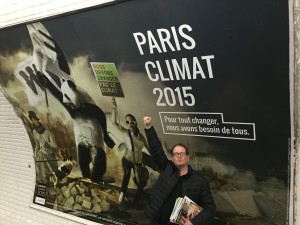 I am in Paris this week for the climate conference seen as the last “do or die” chance at getting the world’s greenhouse gas emissions under control to limit the human increase in global average temperature to 2°C, above which is considered a “dangerous” level. Presently, 184 countries have submitted their intended plans for greenhouse gas reductions although, when totalled up, do not add up to resolve the issue. I have written earlier about some “magical” solutions to reduce the impacts of climate change that scientists call “geo-engineering solutions,” such as seeding the oceans with iron dust, but the discussions in Paris are focusing on ideas that are much more transformational for human society such as the concept of the “third industrial revolution” as proposed by author Jeremy Rifkin. Continue reading
I am in Paris this week for the climate conference seen as the last “do or die” chance at getting the world’s greenhouse gas emissions under control to limit the human increase in global average temperature to 2°C, above which is considered a “dangerous” level. Presently, 184 countries have submitted their intended plans for greenhouse gas reductions although, when totalled up, do not add up to resolve the issue. I have written earlier about some “magical” solutions to reduce the impacts of climate change that scientists call “geo-engineering solutions,” such as seeding the oceans with iron dust, but the discussions in Paris are focusing on ideas that are much more transformational for human society such as the concept of the “third industrial revolution” as proposed by author Jeremy Rifkin. Continue reading
Canada’s Commitment to Greenhouse Gas Reductions at Paris
By Dr. Adam Fenech
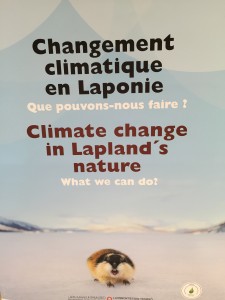 I am in Paris this week for the climate conference seen as the last “do or die” chance at getting the world’s greenhouse gas emissions under control to limit the human increase in global average temperature to 2°C, above which is considered a “dangerous” level. Presently, 184 countries have submitted their intended plans for greenhouse gas reductions with the country of Angola being the latest. Canada tabled their intentions back on May 15 of this year under the former Canadian Government of Stephen Harper’s Conservatives. The Harper government provided Canada’s intention to achieve an economy-wide target to reduce our greenhouse gas emissions by 30% below 2005 levels by 2030. Canada pointed to its stringent coal fired electricity standards that ban the construction of traditional coal-fired electricity generation units, and that accelerate the phase-out of existing coal-fired electricity generation units. Canada also noted action in the transportation sector by working closely with the United States towards common North American greenhouse gas standards for vehicles. As an example, 2025 model year passenger vehicles and light trucks are expected to emit about half as many greenhouse gases as 2008 models. Canada announced its intentions to regulate hydrofluorocarbons (HFCs), the fastest growing greenhouse gas globally; to develop regulations to address methane emissions from the oil and gas sector; as well as to reduce greenhouse gas emissions from natural gas fired electricity, chemicals and nitrogen fertilizers through what it called Canada’s “responsible sector-by-sector regulatory approach that ensures Canada’s economic competitiveness is protected.”
I am in Paris this week for the climate conference seen as the last “do or die” chance at getting the world’s greenhouse gas emissions under control to limit the human increase in global average temperature to 2°C, above which is considered a “dangerous” level. Presently, 184 countries have submitted their intended plans for greenhouse gas reductions with the country of Angola being the latest. Canada tabled their intentions back on May 15 of this year under the former Canadian Government of Stephen Harper’s Conservatives. The Harper government provided Canada’s intention to achieve an economy-wide target to reduce our greenhouse gas emissions by 30% below 2005 levels by 2030. Canada pointed to its stringent coal fired electricity standards that ban the construction of traditional coal-fired electricity generation units, and that accelerate the phase-out of existing coal-fired electricity generation units. Canada also noted action in the transportation sector by working closely with the United States towards common North American greenhouse gas standards for vehicles. As an example, 2025 model year passenger vehicles and light trucks are expected to emit about half as many greenhouse gases as 2008 models. Canada announced its intentions to regulate hydrofluorocarbons (HFCs), the fastest growing greenhouse gas globally; to develop regulations to address methane emissions from the oil and gas sector; as well as to reduce greenhouse gas emissions from natural gas fired electricity, chemicals and nitrogen fertilizers through what it called Canada’s “responsible sector-by-sector regulatory approach that ensures Canada’s economic competitiveness is protected.”
But under a new Canadian Government led by Justin Trudeau’s Liberals, Canada won’t be arriving in Paris with any new targets to cut emissions further. That won’t happen until after the Paris climate talks, when premiers and territorial leaders meet to negotiate a new national approach to climate change. Instead, Canada announced at the Commonwealth Heads of Government meeting in Malta last week a contribution of $2.65 billion over the next five years towards an international climate fund to help developing countries fight climate change. Continue reading
Magic Solutions to Solve Climate Change
By Dr. Adam Fenech
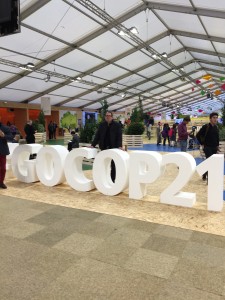 I am in Paris this week for the climate conference seen as the last “do or die” chance at getting the world’s greenhouse gas emissions under control to limit the human increase in global average temperature to 2°C, above which is considered a “dangerous” level. Presently, 183 countries have submitted their intended plans for greenhouse gas reductions (the country of Pulau tabled their intentions this past weekend). So far, these do not total up to a reduction of greenhouse gas emissions that will keep the global temperature increases below the dangerous level, and with two weeks of intense negotiations ahead, I think that it is already clear that countries will not be able to do so. So what next? The public is looking for a magic solution to solve this crisis. Scientists call these geoengineering solutions, that is, ways in which humans can manipulate the global climate system and reduce the impacts of climate change. Lets take a look at three examples being considered, no matter how far fetched, including putting small particles high up in the atmosphere to deflect incoming solar radiation, seeding the world’s oceans with iron dust, and placing large mirrors up in space to reflect the sun’s rays. Continue reading
I am in Paris this week for the climate conference seen as the last “do or die” chance at getting the world’s greenhouse gas emissions under control to limit the human increase in global average temperature to 2°C, above which is considered a “dangerous” level. Presently, 183 countries have submitted their intended plans for greenhouse gas reductions (the country of Pulau tabled their intentions this past weekend). So far, these do not total up to a reduction of greenhouse gas emissions that will keep the global temperature increases below the dangerous level, and with two weeks of intense negotiations ahead, I think that it is already clear that countries will not be able to do so. So what next? The public is looking for a magic solution to solve this crisis. Scientists call these geoengineering solutions, that is, ways in which humans can manipulate the global climate system and reduce the impacts of climate change. Lets take a look at three examples being considered, no matter how far fetched, including putting small particles high up in the atmosphere to deflect incoming solar radiation, seeding the world’s oceans with iron dust, and placing large mirrors up in space to reflect the sun’s rays. Continue reading
Cap-and-Trade Systems to Reduce Greenhouse Gas Emissions
By Dr. Adam Fenech
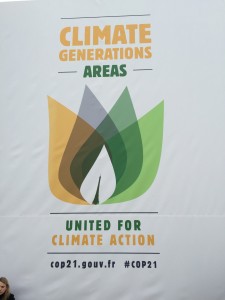 I’ll be there in Paris next week for the conference where the United Nations will negotiate a legally binding agreement on climate with the aim of keeping global warming below a dangerous level of 2°C. Discussions have turned to carbon pricing as a means of reducing greenhouse gases to combat global warming such as cap-and-trade systems. The “cap” is like a license to pollute up to a certain threshold, setting a limit on greenhouse gas emissions, which is lowered over time to reduce the amount of pollutants released into the atmosphere. The “trade” creates a market that allows large industries to trade their polluting licences amongst each other. Each industry is given a license to emit a certain amount of greenhouse gas, known as a carbon allowance, and they can do so, or innovate in order to meet or come in under their allocated limit. The less they emit, the less they pay, so it is in their best interest to pollute less and save money, as they can sell the remainder of their allowance.
I’ll be there in Paris next week for the conference where the United Nations will negotiate a legally binding agreement on climate with the aim of keeping global warming below a dangerous level of 2°C. Discussions have turned to carbon pricing as a means of reducing greenhouse gases to combat global warming such as cap-and-trade systems. The “cap” is like a license to pollute up to a certain threshold, setting a limit on greenhouse gas emissions, which is lowered over time to reduce the amount of pollutants released into the atmosphere. The “trade” creates a market that allows large industries to trade their polluting licences amongst each other. Each industry is given a license to emit a certain amount of greenhouse gas, known as a carbon allowance, and they can do so, or innovate in order to meet or come in under their allocated limit. The less they emit, the less they pay, so it is in their best interest to pollute less and save money, as they can sell the remainder of their allowance.
The cap-and-trade system worked very well to combat the acid rain issue back in the 1980s. Continue reading
Carbon Taxes to Fight Climate Change
By Dr. Adam Fenech
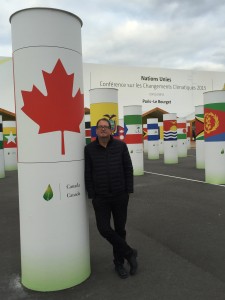 I’ll be there in Paris next week for the conference where the United Nations will negotiate a legally binding agreement on climate with the aim of keeping global warming below a dangerous level of 2°C. Discussions have turned to carbon pricing as a means of reducing greenhouse gases to combat global warming such as carbon taxes.
I’ll be there in Paris next week for the conference where the United Nations will negotiate a legally binding agreement on climate with the aim of keeping global warming below a dangerous level of 2°C. Discussions have turned to carbon pricing as a means of reducing greenhouse gases to combat global warming such as carbon taxes.
A carbon tax is a tax based on greenhouse gas emissions generated from burning fossil fuels. It puts a price on each tonne of greenhouse gas emitted, making products more expensive and therefore less demanding, resulting in reduced emissions. It has the advantage of providing an incentive without favouring any one way of reducing emissions over another. By reducing fuel consumption, increasing fuel efficiency, using cleaner fuels and adopting new technology, businesses and individuals can reduce the amount they pay in carbon tax, or even offset it altogether. A carbon tax was considered back in the late 1980s as the climate change issue emerged into the world’s consciousness but rejected due to the experience of the oil crisis of the 1970s. In 1973, the price of oil increased from $3 per barrel to nearly $12 globally (even higher in the United States) in one year following an oil embargo by the Organization of Petroleum Exporting Countries (OPEC). Such a radical price increase did little, if anything, to reduce the amount of fossil fuels used by North Americans.
But this did not prevent Canadian provinces from introducing carbon taxes. In 2008, British Columbia introduced a carbon tax of $10 per tonne of greenhouse emissions (2.41 cents per litre on gasoline) increasing each year by $5 per tonne until 2012 when it reached a final price of $30 per tonne (7.2 cents per litre at the pumps). Before the tax actually went into effect, the B.C. government sent out “rebate cheques” of $100 to all residents of British Columbia. And revenue neutral by law, the proceeds from the B.C. carbon tax are matched by cuts in other taxes (like income tax). Continue reading
A Time for the World to Come Together on Climate Change
By Dr. Adam Fenech
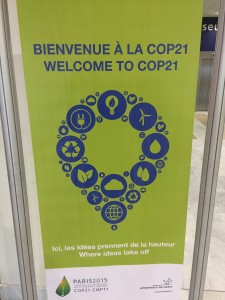 I was a young graduate student back in 1992 when I attended the United Nations’ Earth Summit in Rio de Janeiro, Brazil. That conference was the beginning of an international political response to addressing the issue of global warming through the adoption of the agreement titled the United Nations’ Framework Convention on Climate Change. Almost all of the 195 countries of the world have signed this agreement aimed at stabilising atmospheric concentrations of greenhouse gases to avoid “dangerous human interference with the climate system.” And now 23 years later, we all know that we have not been able to reduce our appetite for burning fossil fuels to create energy, and that we are beginning to feel the effects of climate change that are rapidly advancing to a dangerous level.
I was a young graduate student back in 1992 when I attended the United Nations’ Earth Summit in Rio de Janeiro, Brazil. That conference was the beginning of an international political response to addressing the issue of global warming through the adoption of the agreement titled the United Nations’ Framework Convention on Climate Change. Almost all of the 195 countries of the world have signed this agreement aimed at stabilising atmospheric concentrations of greenhouse gases to avoid “dangerous human interference with the climate system.” And now 23 years later, we all know that we have not been able to reduce our appetite for burning fossil fuels to create energy, and that we are beginning to feel the effects of climate change that are rapidly advancing to a dangerous level.
Next week, the 2015 Paris Climate Conference will attract close to 50,000 participants including 25,000 official delegates from government, intergovernmental organisations, UN agencies, NGOs and civil society. It will be the first time in over 20 years of United Nations negotiations to result in a legally binding and universal agreement on climate with the aim of keeping global warming below a dangerous level of 2°C. Continue reading
UPEI’s Climate Research Lab launches Some Weather We’re Having! The 2016 PEI weather trivia calendar, co-authored by Don Jardine, Adam Fenech
 Islanders are defined by the weather. We are at the whim of Mother Nature and the weather she brings. It keeps us at home, keeps us from work, keeps our kids from school, yet it brings communities together.
Islanders are defined by the weather. We are at the whim of Mother Nature and the weather she brings. It keeps us at home, keeps us from work, keeps our kids from school, yet it brings communities together.
There’s nothing like the weather as a conversation starter. “Some Weather We’re having!”, the 2016 Prince Edward Island weather trivia calendar, will help that banter.
Co-authored by Don Jardine and Dr. Adam Fenech and published by the Climate Research Lab at UPEI, this second edition of the weather trivia calendar is filled with 366 stories about real local weather events from across the Island over the past 400 years. Continue reading

